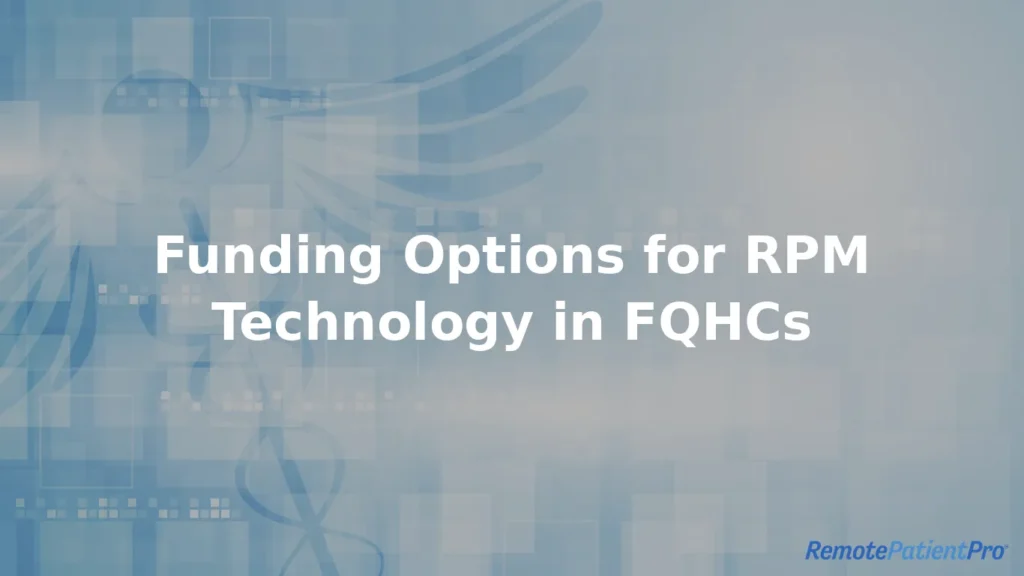Funding Options for RPM Technology in FQHCs
Federally Qualified Health Centers (FQHCs) are essential to underserved communities, yet many face financial constraints when it comes to adopting new medical services like remote patient monitoring. Funding options for RPM technology in FQHCs are critical to help them manage chronic disease, get their patients more involved in their own care, and reduce the number of hospital readmissions.
By leveraging federal grants, Medicaid and Medicare reimbursements, private funding, and value-based care incentives, FQHCs can invest in cost-effective RPM platforms without overextending their budgets.
Key Funding Sources for RPM in FQHCs
Federal Grants and Government Programs
FQHCs can access federal and state grant programs designed to support digital health initiatives, including RPM technology. Key funding sources include:
- HRSA Grants – The Health Resources & Services Administration offers funding for FQHCs to enhance telehealth and RPM adoption.
- FCC Telehealth Grant Program – The Federal Communications Commission provides funding for healthcare technology, including remote patient monitoring solutions.
- State Medicaid Programs – Many states offer Medicaid funding for digital health programs, allowing FQHCs to integrate RPM at low or no cost.
Medicare and Medicaid Reimbursements
RPM services are eligible for Medicare and Medicaid reimbursement, making them a financially viable option for FQHCs. Key billing codes for RPM reimbursement include:
- CPT Code 99453 – Covers patient onboarding and initial device setup.
- CPT Code 99454 – Supports monthly RPM device transmission and monitoring.
- CPT Codes 99457 and 99458 – Provide reimbursement for patient interaction and remote monitoring management.
Value-Based Care and Alternative Payment Models
FQHCs participating in value-based care programs can secure additional funding by demonstrating improved patient outcomes through RPM. These programs include:
- Accountable Care Organizations (ACOs) – RPM can help FQHCs meet performance metrics and qualify for shared savings incentives.
- Patient-Centered Medical Home (PCMH) Initiatives – RPM supports chronic care coordination, making it easier to receive financial incentives under PCMH models.
Private Grants and Nonprofit Funding
Several nonprofit organizations and private foundations provide funding for digital health initiatives in community health settings. Examples include:
- The Commonwealth Fund – Offers grants to improve health equity and access to telehealth solutions.
- The Robert Wood Johnson Foundation – Provides funding for technology-driven solutions for health equity.
Partnering With Technology Vendors
Many RPM vendors offer flexible pricing models, leasing options, or partnerships to make technology more accessible to FQHCs. RPP’s remote patient monitoring (RPM) platform provides:
- Affordable subscription plans designed for FQHC budgets.
- Customizable solutions to align with grant and reimbursement requirements.
- Seamless integration with EHR systems for efficient patient care.
Securing Funding for RPM Implementation
By combining grants, reimbursements, and private funding, FQHCs can implement cost-effective RPM solutions while improving patient outcomes.
Adopting remote patient monitoring technology doesn’t have to be financially overwhelming. By exploring federal grants, insurance reimbursements, and value-based care incentives, FQHCs can implement RPM solutions to enhance patient care without exceeding budget limitations.
Looking for an affordable RPM solution? Schedule a demo to learn how our RPM platform can support your FQHC’s financial and clinical goals.

